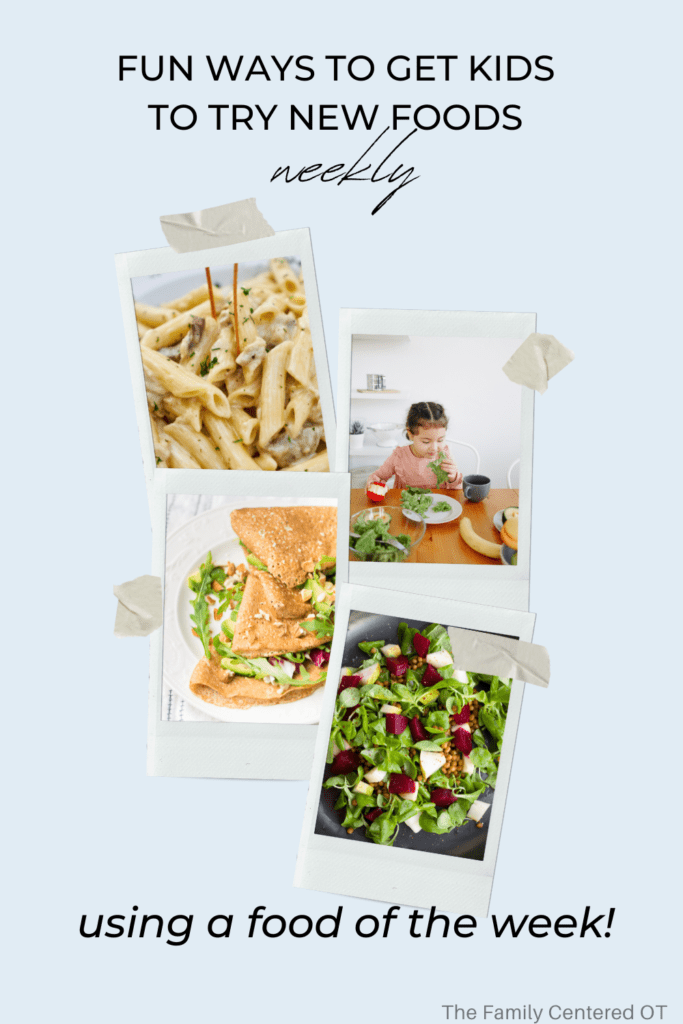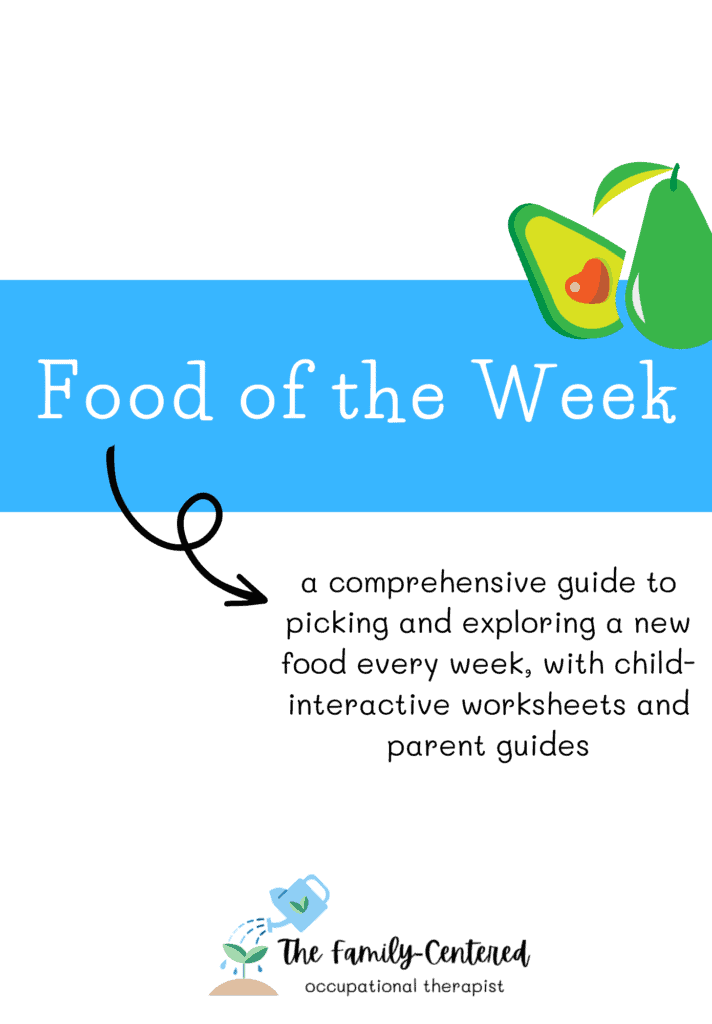Science shows that children learn best through play. In fact, Dr. Karyn Purvis found that it takes approximately 400 repetitions to create a new connection in the brain. But if it is done through play, the child only need 10-20 repetitions. When we work with kids with feeding challenges, it is so important to take advantage repetition when trying new foods. One easy and fun way to do this? Choosing a food of the week!
Many schools use a letter of the week program when helping kids learn the alphabet. The children will learn about colors that start with that letter, bring in items for show and tell that start with that letter, and even read books with that letter. One of the families I worked in feeding therapy with had the genius idea to do the same thing, but with food!
There are a few reasons trying a new food weekly with a food of the week program is a genius idea:
- Introducing new foods needs to be low stress, as stress releases adrenalin which reduces our desire to eat
- Learning about new foods needs to be fun – just like Dr. Purvis says, it reduces the number of repetitions we need to make connections with it
- If we change the context and way we introduce the foods each time, we increase the likelihood the child will be interested in it

Ways to implement your food of the week program:
Make a plan
Bring your child grocery shopping with you and have them choose a food they want to learn about. Out of ideas? Ask them what their friends are eating at lunch and use that as inspiration – think of it as positive peer influence.
Explore the foods
Use a multi-sensory approach to learn about each new food, including foods that your picky eater typically doesn’t like. Think about each of the 5 senses, and explore with those senses. Encourage your child NOT to make value statements about the food (i.e. this is yucky or yummy). Instead, have them use more objective words. Some ideas for each sense:
- Vision: change the color with food dye, see how the food changes when you mash it
- Smell: put the food in a container and “burp” it, see if you mix it with other foods if you can mask or change the smell
- Touch: paint with the food, use cookie cutters to explore the food, have your child cut the food with child safe knives (such as these)
- Hearing: what does the food sound like when you shake it in a container
- Taste: how does the food’s taste change when you lick it in the front vs back of your tongue, how about when you roast it versus steam it

Use their interests to make it fun
Just like the letter of the week activity in kindergarten, choose ways to get your child interested in the food of the week. Maybe they like coloring – have them draw a picture of the food. Maybe music is more their thing – see if you can find a silly song about the food and have that be your “song of the week”. You can do this with books, pretend play, etc. The possibilities are endless. As a parent and as feeding therapists, our job is to cultivate curiosity and excitement through modeling, so get excited! This project can be whatever you and your child help it evolve to be. And maybe, they’ll even learn to try a new food in the process!
If you need a guide to help you in the process, or if you’re feeling lost or unsure of where to start, I am offering this fantastic 18-page resource for the food of the week. It provides you with common language to use during the food interaction activities to prevent value statements from getting in the way of your child’s progress. It also provides suggestions for how to help your child “fix” the foods to be more appealing to them.
As always, feel free to contact me with any questions! Happy learning!


